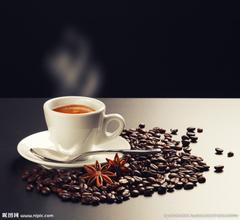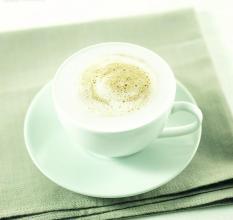Caffeine content of coffee beans after semi-washing reduces coffee beans washing and sun exposure
What is the effect of baking degree on caffeine content?
Some people might say that mixed beans are usually deep-baked and caffeine will be reduced. The change of baking degree actually has little effect on caffeine.
Why, isn't caffeine obviously sublimated at 120 degrees?
Answer: because of time, because of water.
First, when baking, the time when the bean temperature exceeds 120 degrees is not long enough to sublimate caffeine.
Second, people who have done classic experiments in organic chemistry know that caffeine sublimation must first remove water, because water will affect caffeine sublimation. As for coffee beans, can deep baking remove all the water? Obviously not, this in the limited time of baking, will further affect caffeine sublimation ESP or hand flushing, which is healthier?
According to Han Huaizhong, if filter paper is used for hand flushing, it will filter out caffeine and caffeine, which are the second of the three substances in coffee that are most harmful to health.
The rest of the caffeine is actually the least harmful, and the right amount of caffeine has some benefits. So even if ESP reduces caffeine by reducing the amount of powder, hand flushing is still healthier. How does the caffeine content change when using different beans?
The previous comparison is the comparison of caffeine content in different extraction methods of the same kind of beans. What about using different coffee beans?
In fact, if you use the same amount of beans, the caffeine content of ESP is often higher than that of hand flushing.
Because Luodou is rarely used in hand flushing, and Luodou is often used in matching beans. It is well known that the caffeine content of the same amount of Luodou is much higher than that of Adou. What determines the amount of caffeine in a cup of coffee?
The answer to this question, if you ignore the variables that have little impact, to put it arbitrarily, is that there are only two determinants: coffee bean variety and coffee bean weight.
Han Huaizhong once wrote a formula in coffee science to calculate the caffeine content in a cup of coffee: coffee beans (grams) × caffeine percentage of the beans used.
In other words, if you use 18 grams of Yega to make coffee, regardless of hand brewing, siphon, French pressure, Italian machine, American machine, and Philadelphia pressure, use Yega's 1.4% caffeine ratio multiplied by 18.
This formula is only a rough calculation, not very accurate, but for our questions, it reflects the answer.
Why is this so? because of these extraction methods, the best extraction rate is 18% Murray and 22%. At this time, caffeine, as a more soluble substance, is close to complete extraction.

Important Notice :
前街咖啡 FrontStreet Coffee has moved to new addredd:
FrontStreet Coffee Address: 315,Donghua East Road,GuangZhou
Tel:020 38364473
- Prev

Introduction to the blending method of espresso there are several steps in the practice of espresso
[two personal opinions on making formula beans] first, selling coffee beans with the same taste all the year round is the goal of the baker.After all, some customers want to drink the flavor they like all year round, but unfortunately, coffee is a kind of crop. the harvest varies from season to season, so how to adjust the type and proportion of the formula is a way to make fresh and stable coffee.
- Next

The latest 2017 SCAA coffee flavor wheel HD map_HD version Chinese English coffee flavor wheel origin
On January 19, 2016, SCAA (Specialty Coffee Association of America) and WCR (World Coffee Research) made history on SCAA coffee flavor round.
Related
- Guji coffee producing area of Guji, Ethiopia: Humbela, Shakiso, Wulaga
- What is the most expensive variety of Qiloso in BOP multi-variety group?
- How to store the coffee beans bought home?
- Why are Yemeni coffee beans so rare now?
- Ethiopian Sidamo all Red Fruit Sun Sun Santa Vini Coffee beans
- SOE is mostly sour? What does it mean? Is it a single bean? what's the difference between it and Italian blending?
- Is Italian coffee beans suitable for making hand-brewed coffee?
- How to choose coffee beans when making cold coffee? What kind of coffee beans are suitable for making cold coffee?
- Just entered the pit to make coffee, what kind of coffee beans should be chosen?
- Can only Japan buy real Blue Mountain Coffee? What are authentic Jamaican Blue Mountain coffee beans?

